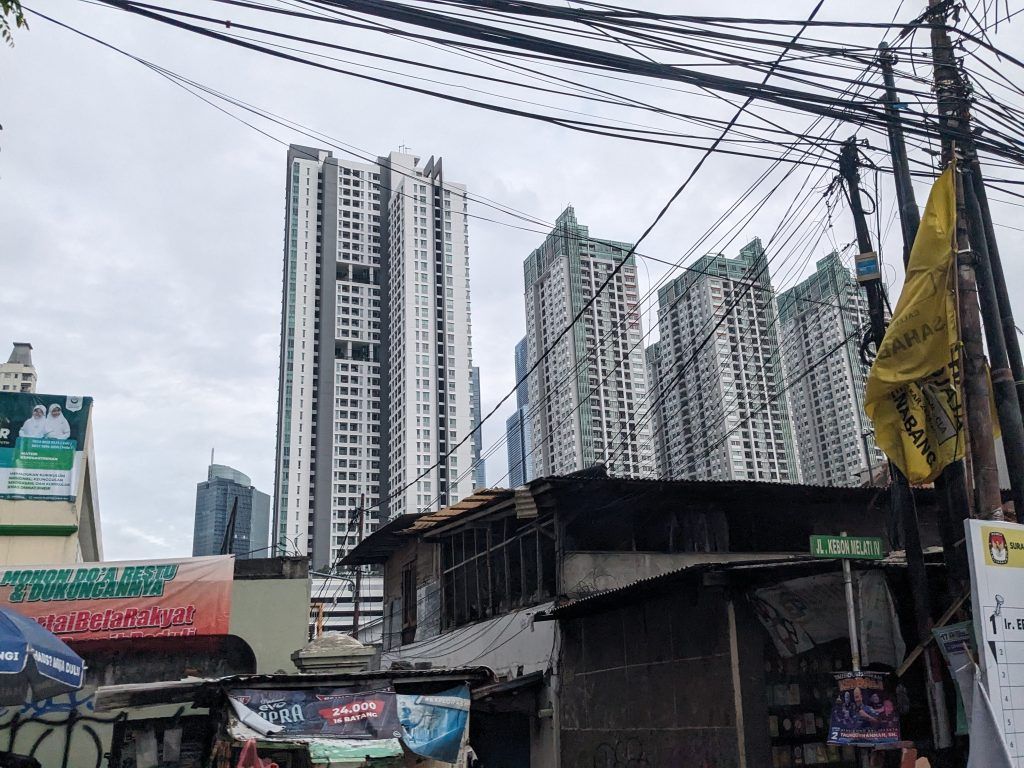Jakarta is a giant. It is the largest metropolis in Southeast Asia (with over 11 million people), it has the region’s second largest economy after Singapore and, after Tokyo, it has the second largest urban area in the world (with over 35 million people). It’s also a gigantic mess. Jakarta has consistently gridlocked traffic, extensive air pollution, and it’s sinking up to 17 centimeters (6.7 inches) per year.
I had two days there and spent one day seeing some of the basic sites. The first was the National Monument in Merdeka Square, which is the city’s principal landmark.
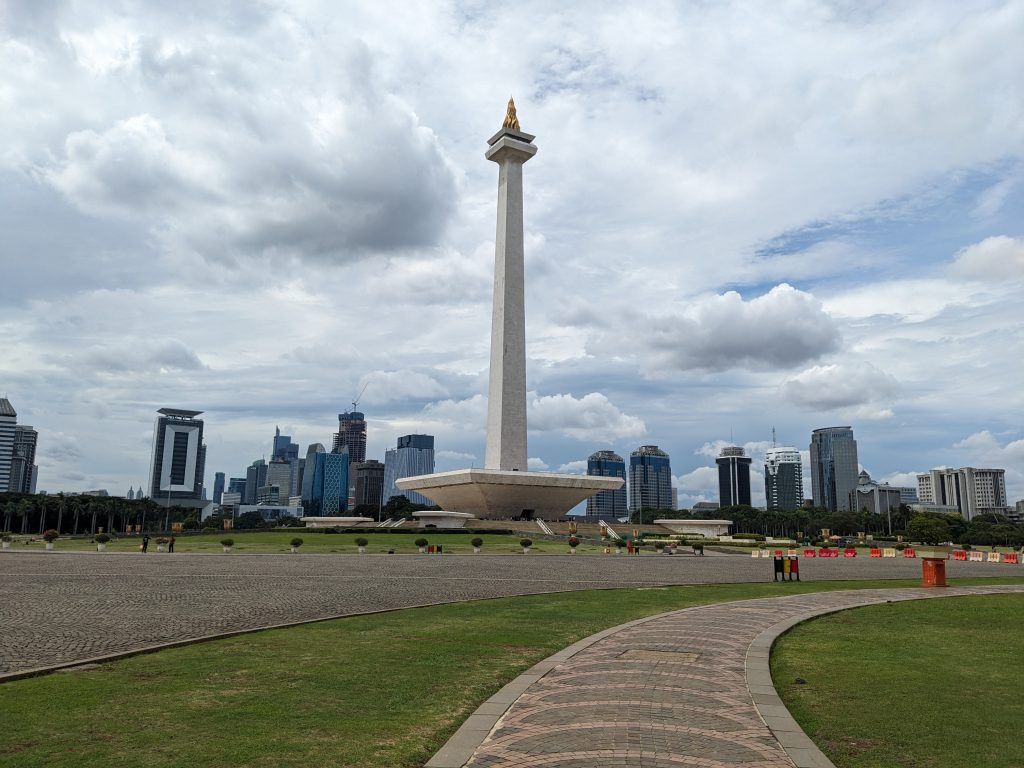
At the bottom was a series of dioramas of the history of Indonesia.
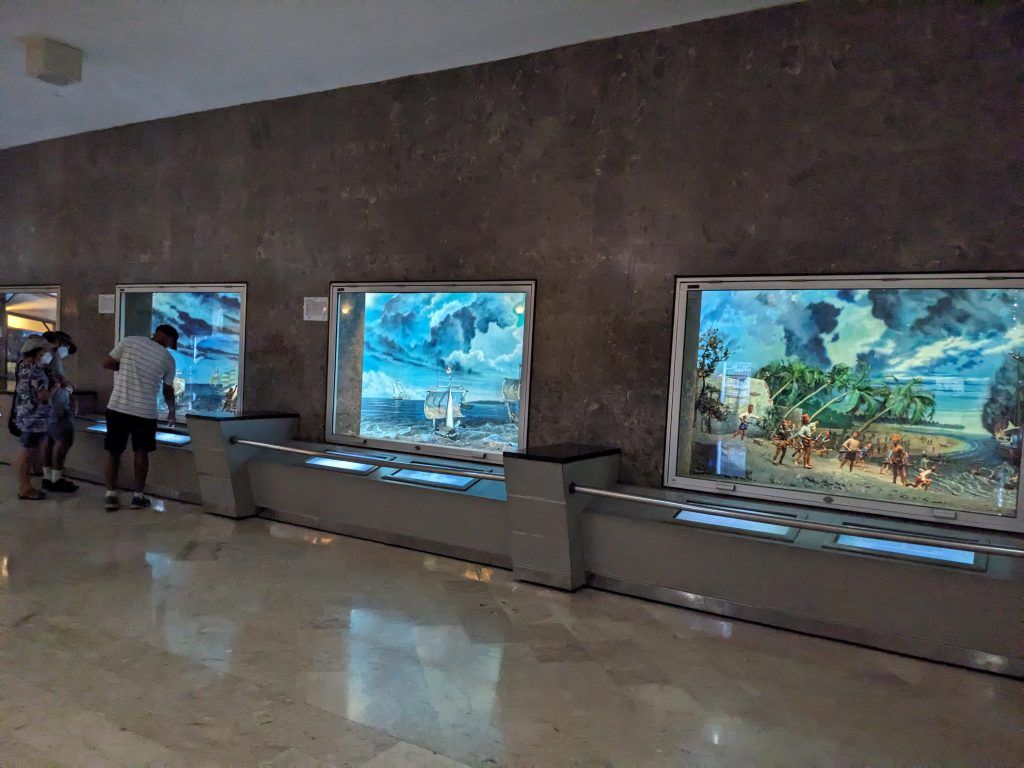
At the top you can see some nice open air views of the surrounding city.
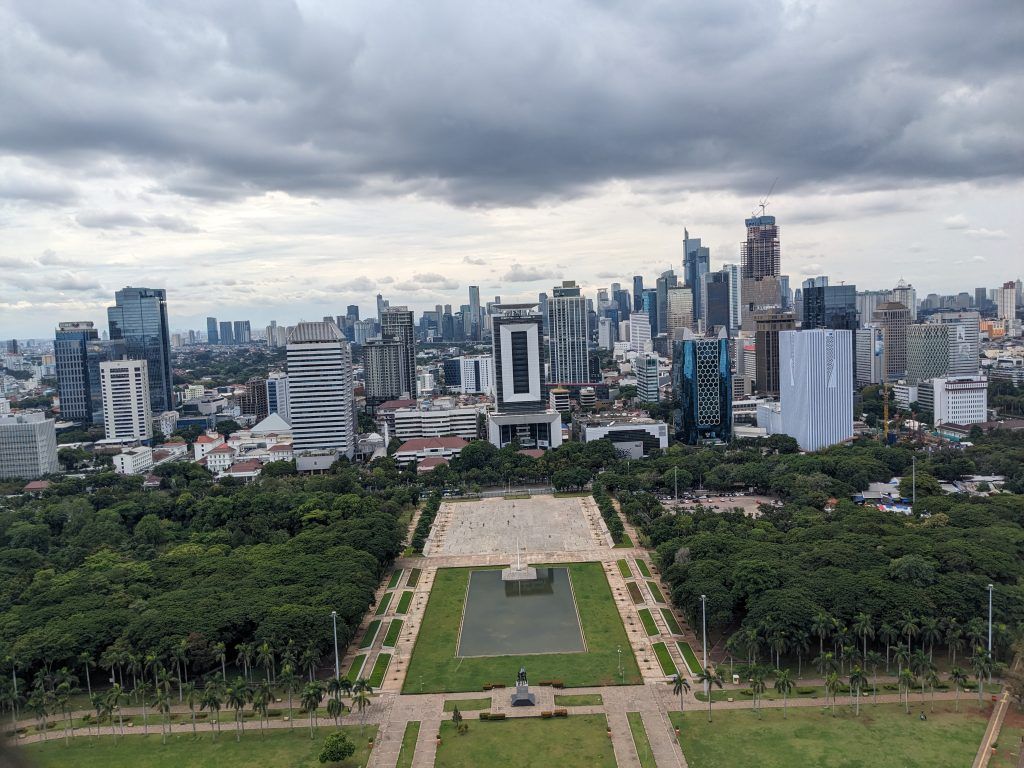
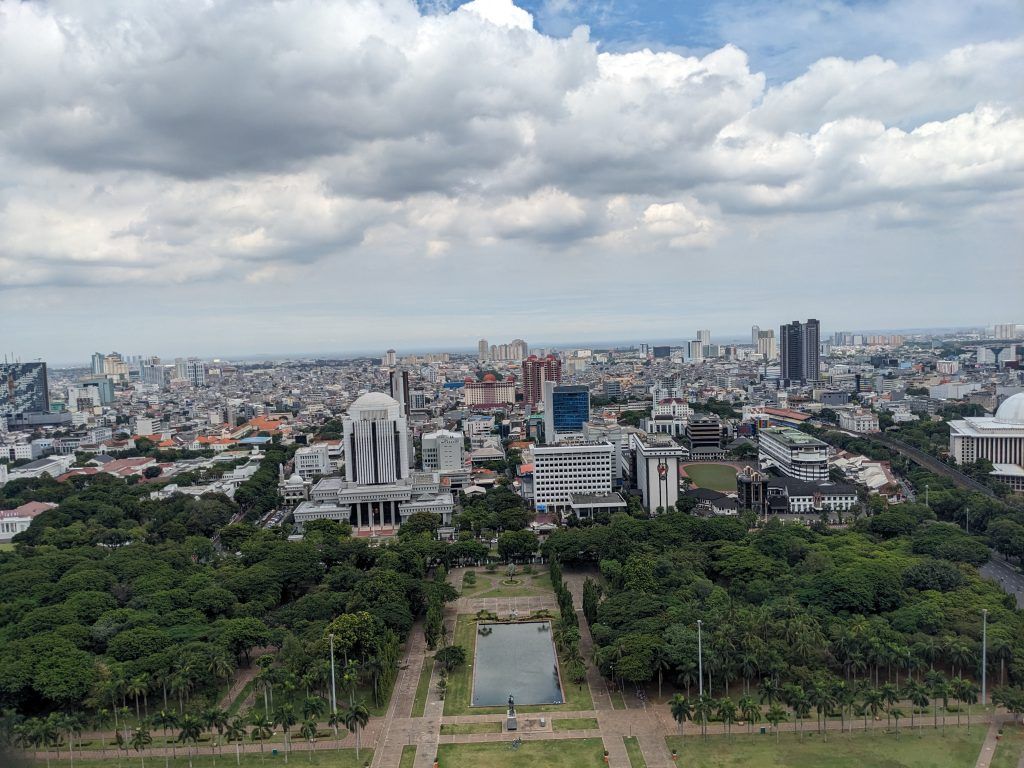
The center of the Dutch administration is what is now called Taman Fatahillah where the original Dutch administrative offices were in buildings surrounding an open square.
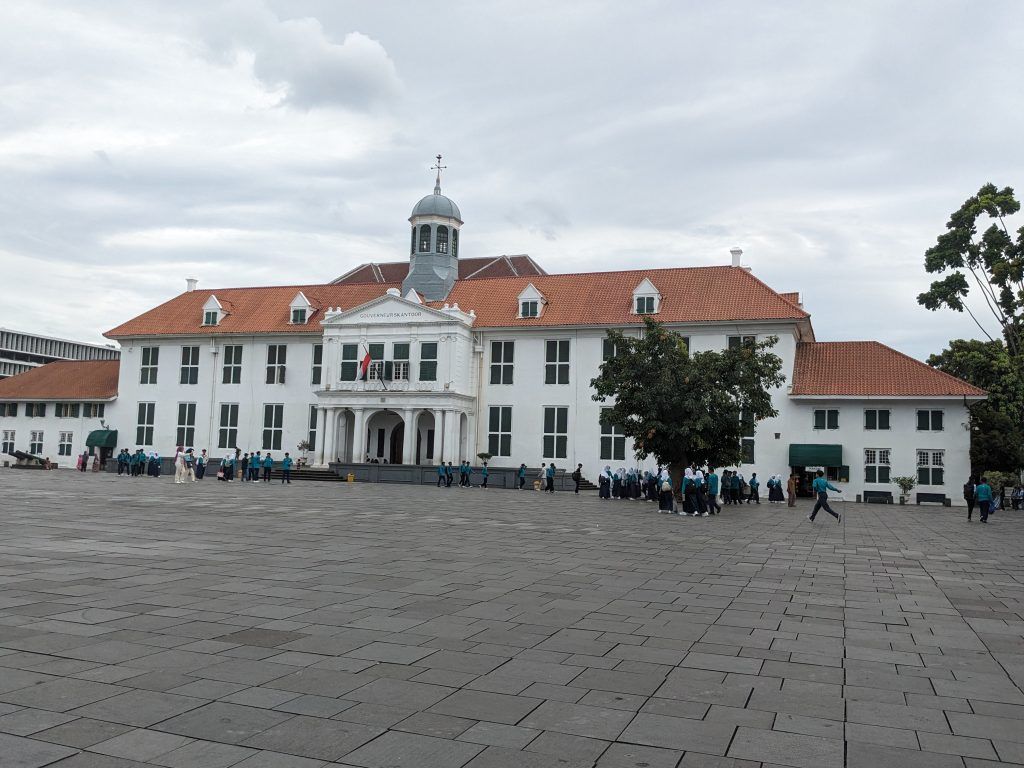
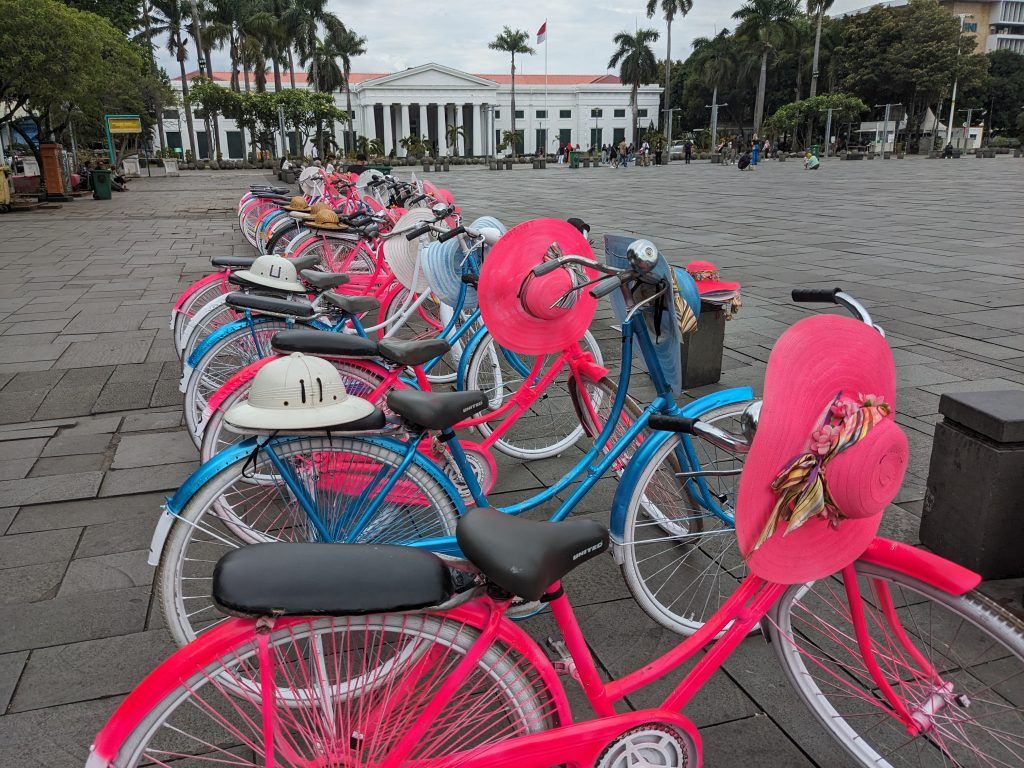
The most interesting thing to do here is go to the Museum Bank Indonesia which is a museum dedicated to documenting the financial history of Indonesia through the lense of its central bank. It’s housed in a beautiful buiding that was the original central bank offices.
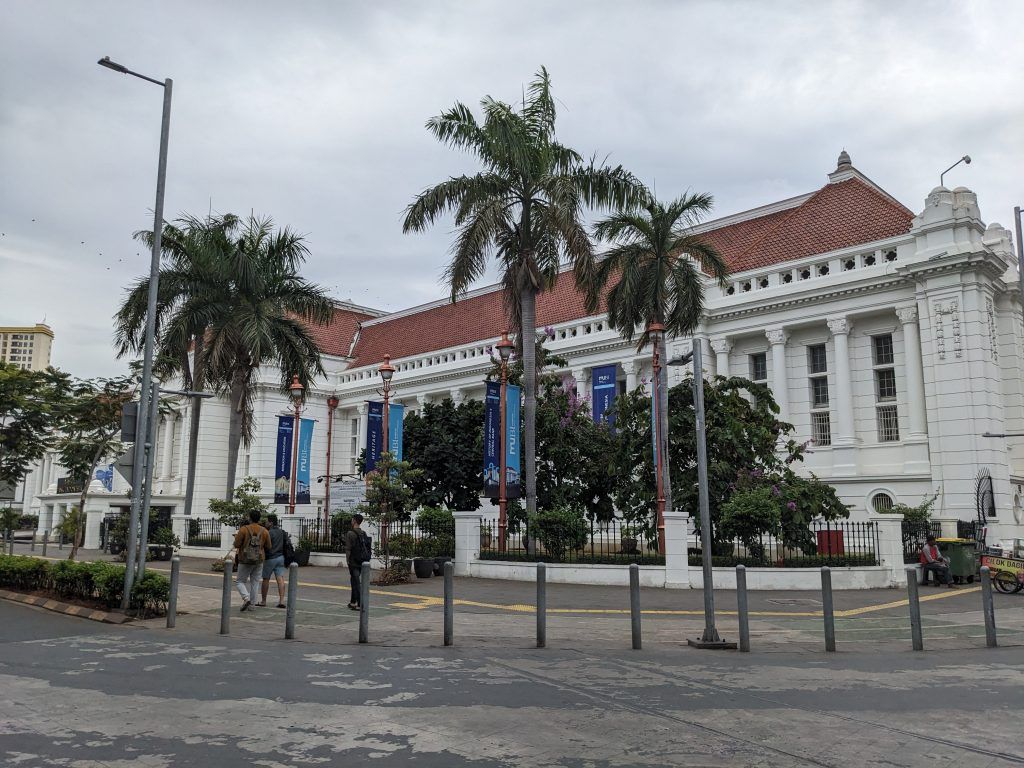
The entrance is in the former central bank lobby.
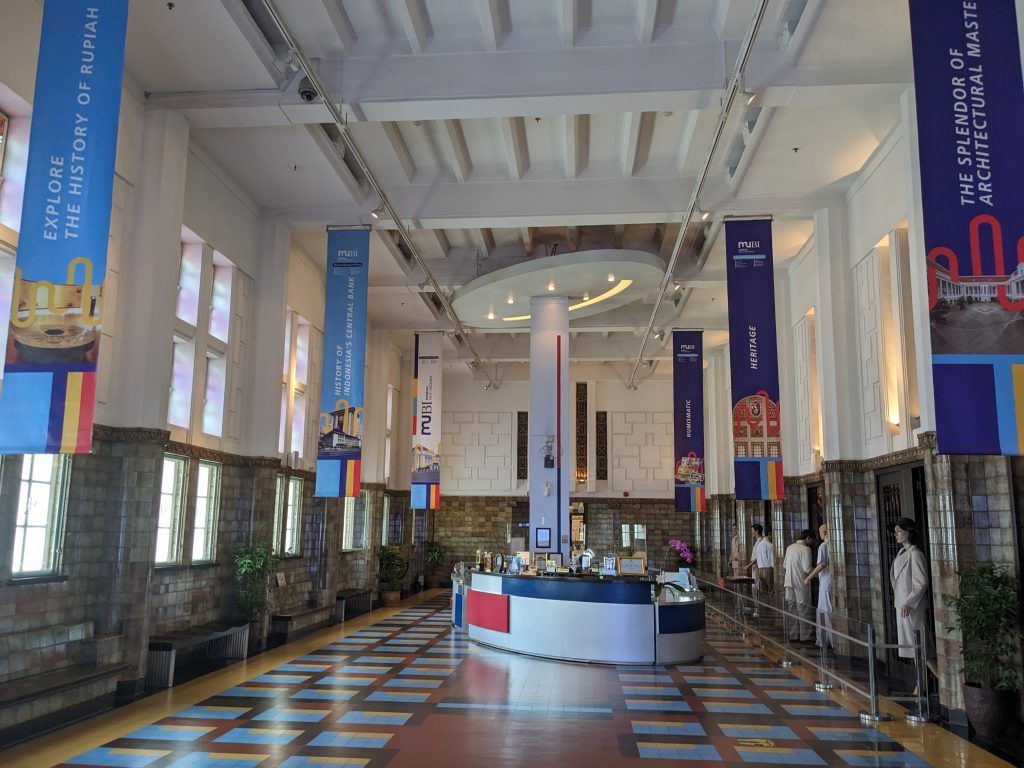
There a number of interesting exhibits on the history of trade in Indonesia.
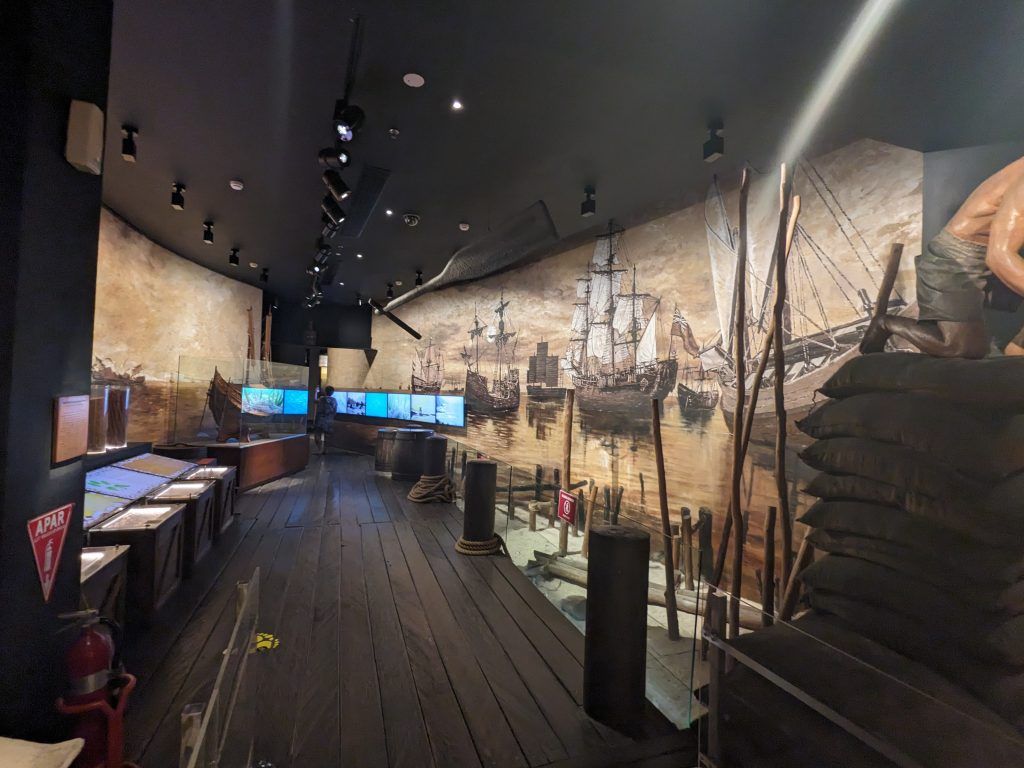
The middle courtyard of the building.
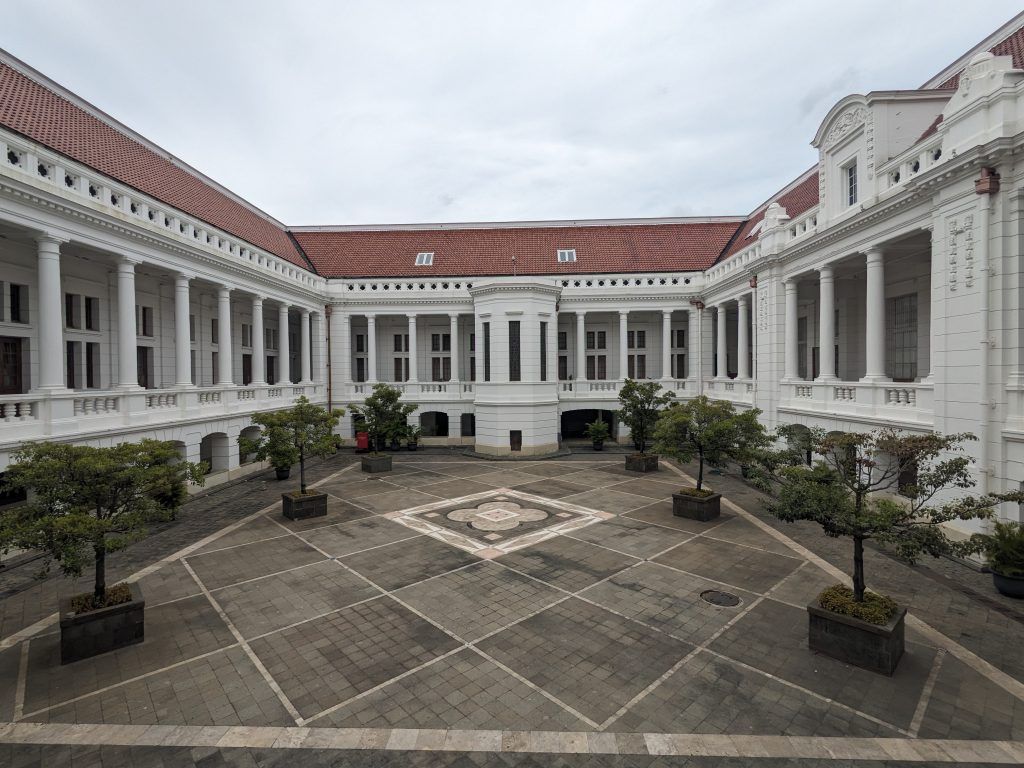
And what would a central bank museum be without a pile of gold encased in thick glass within a heavily sealed vault room.
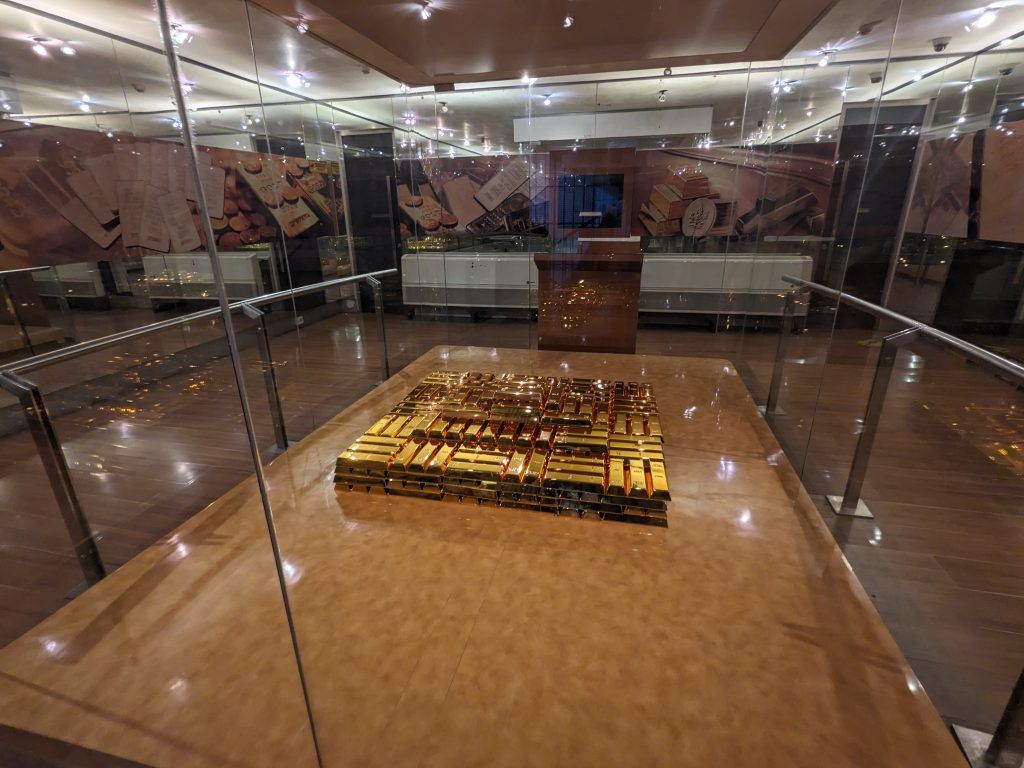
Below is Indonesia’s Istana Merdeka, which is its presidential palace. It was built by the Dutch in 1879.
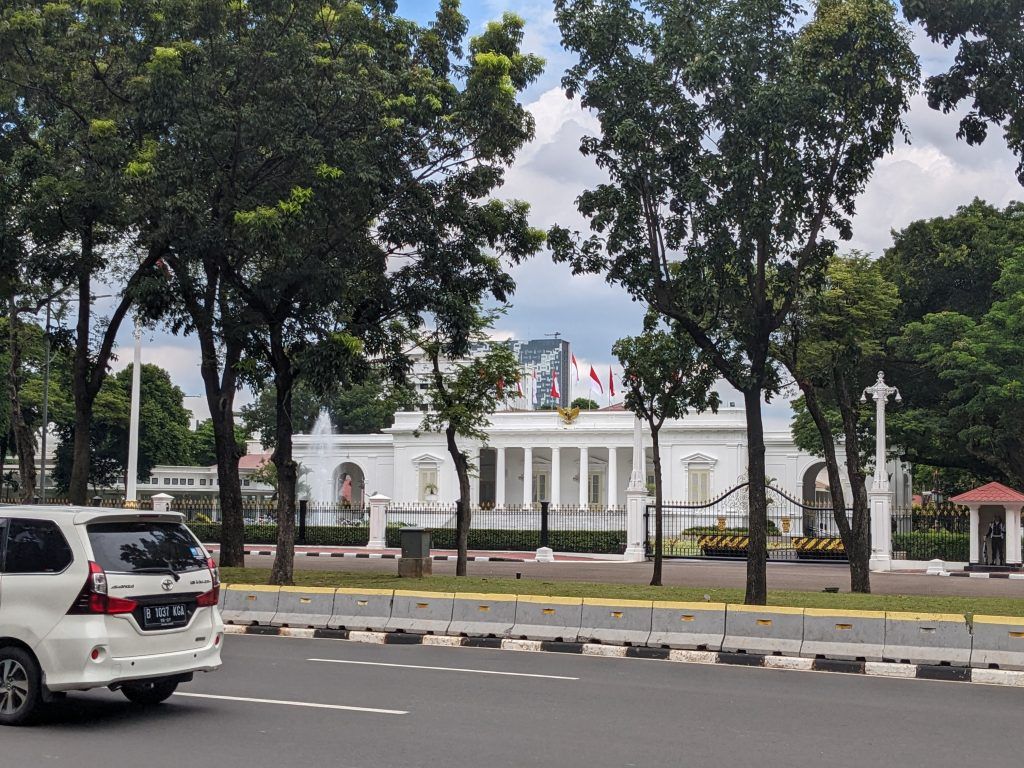
The Galeri Nassional is the city’s National Gallery. Unfortunately, only a couple of exhibits where open when I visited. It’s in a beatiful set of buildings centered on an 1817 Dutch building.
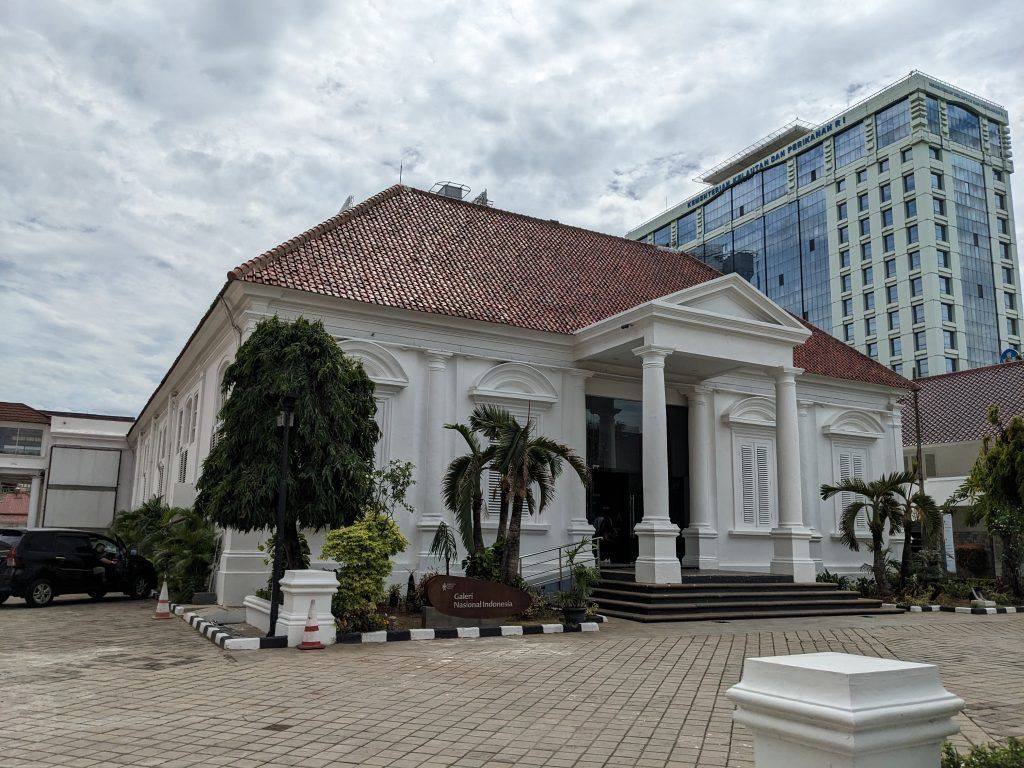
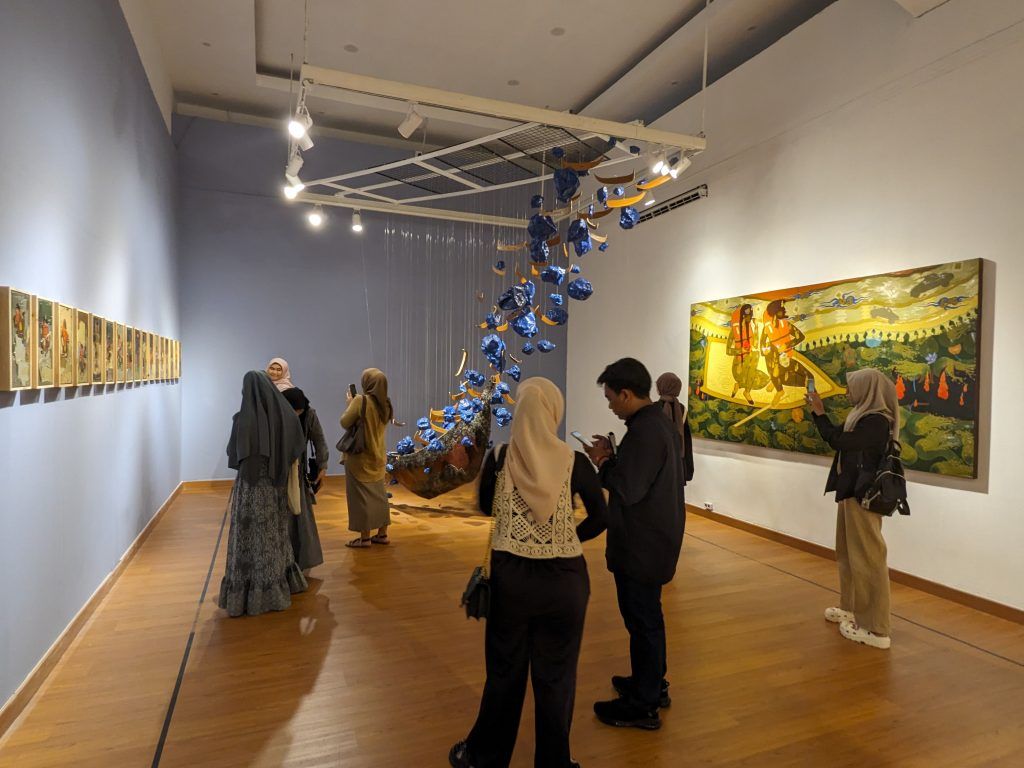
Chinatown is basically one long street with scores of vendors selling innumerable red Chinese hanging decorations and a number of side streets with a hodge podge of people, scooters, Chinese spices, and stalls with general products.
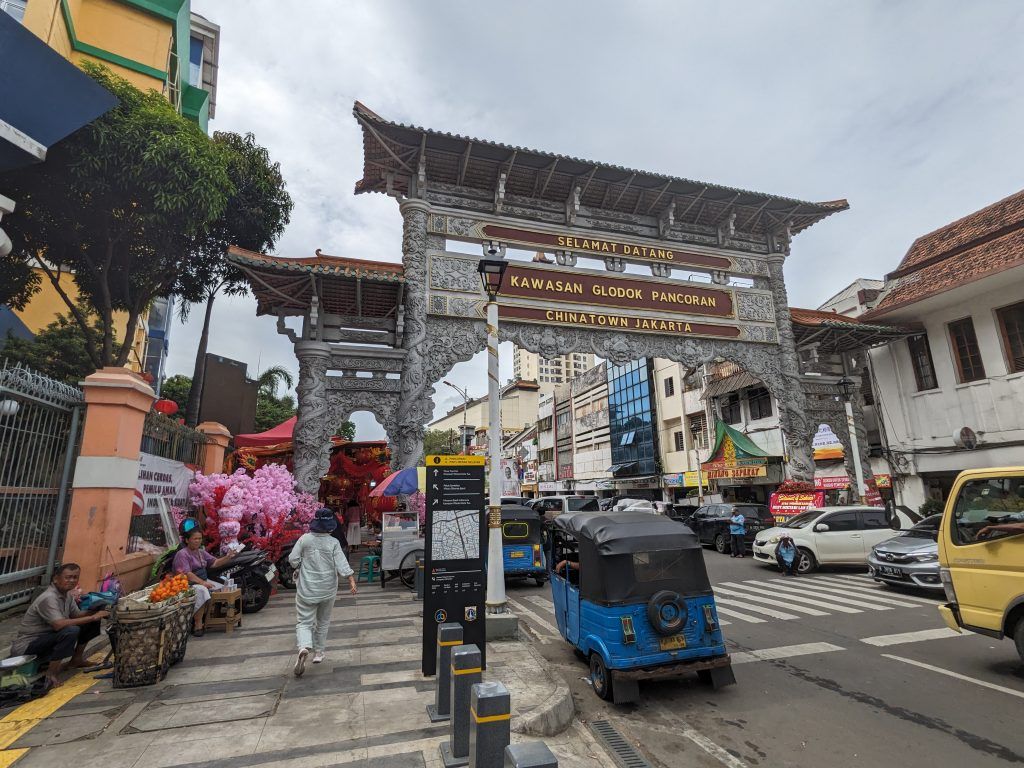
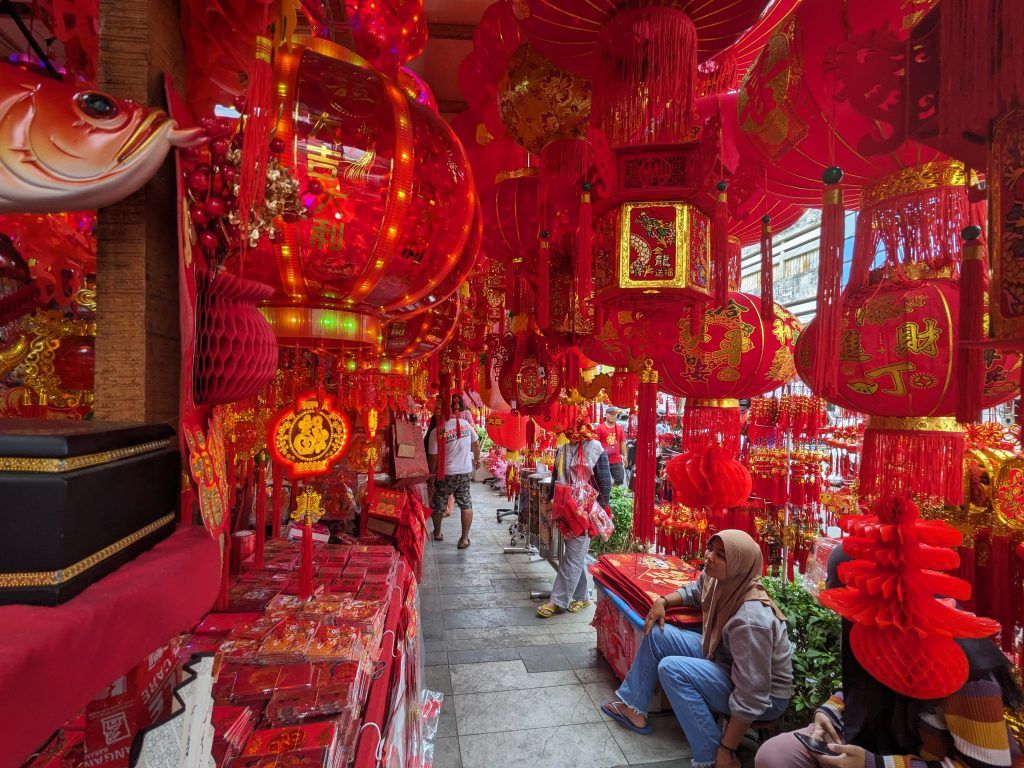
One of the crowded side streets in Chinatown.
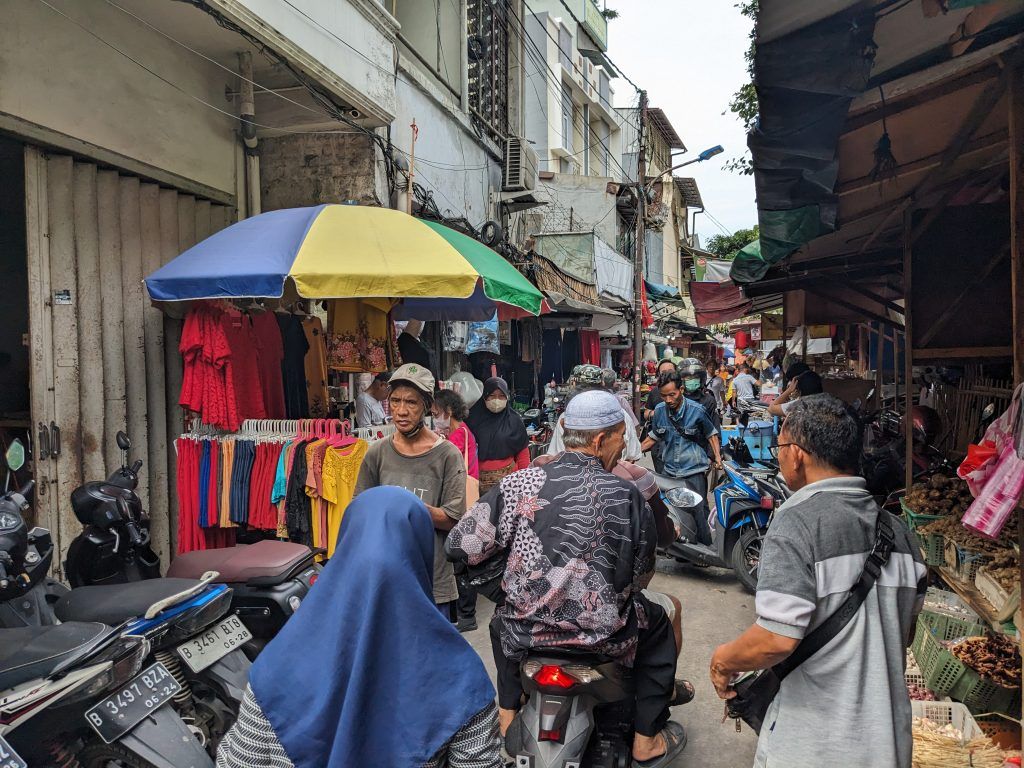
Jakarta is a city of contrasts. There are very modern and wealthy areas that feel like you could be in a place like Singapore.
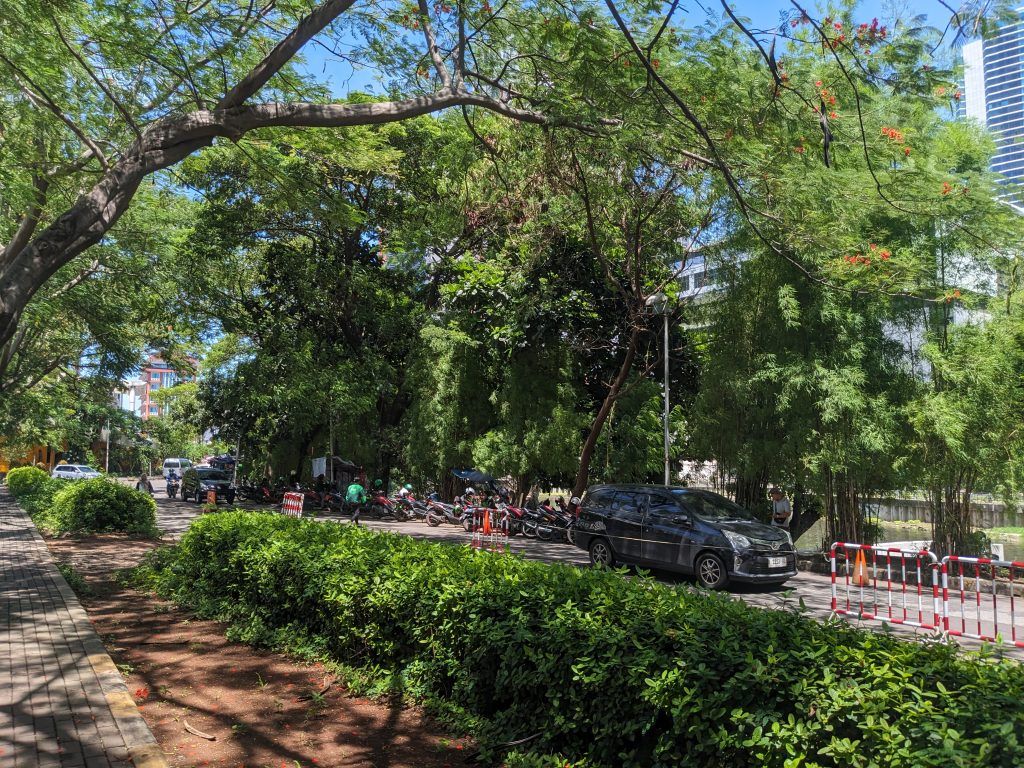
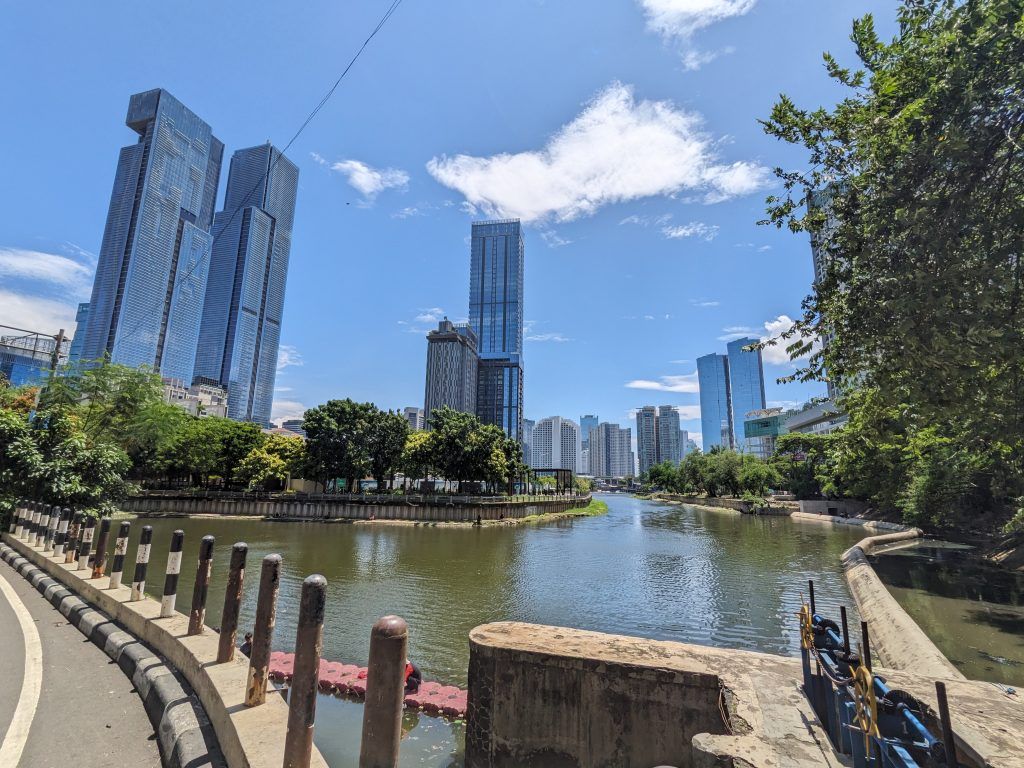
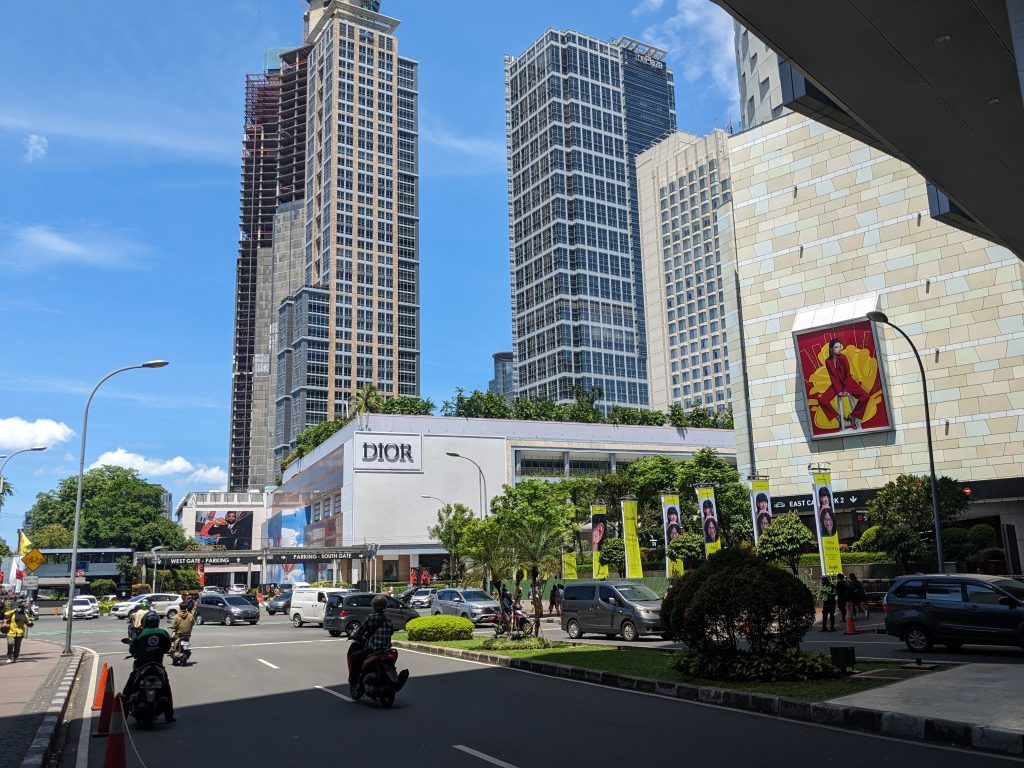
And there are vast stretches of Jakarta with less ambience and various levels of traffic chaos. I needed to walk less than a kilometer from Taman Fatahillah to Chinatown. Unfortunately there were no sidewalks on most of that route, so I hopped into a tuk tuk for the short ride. You can get a sense of the traffic chaos as a supposedly one way street meant nothing to the scores of motorbike riders squeezing through it.
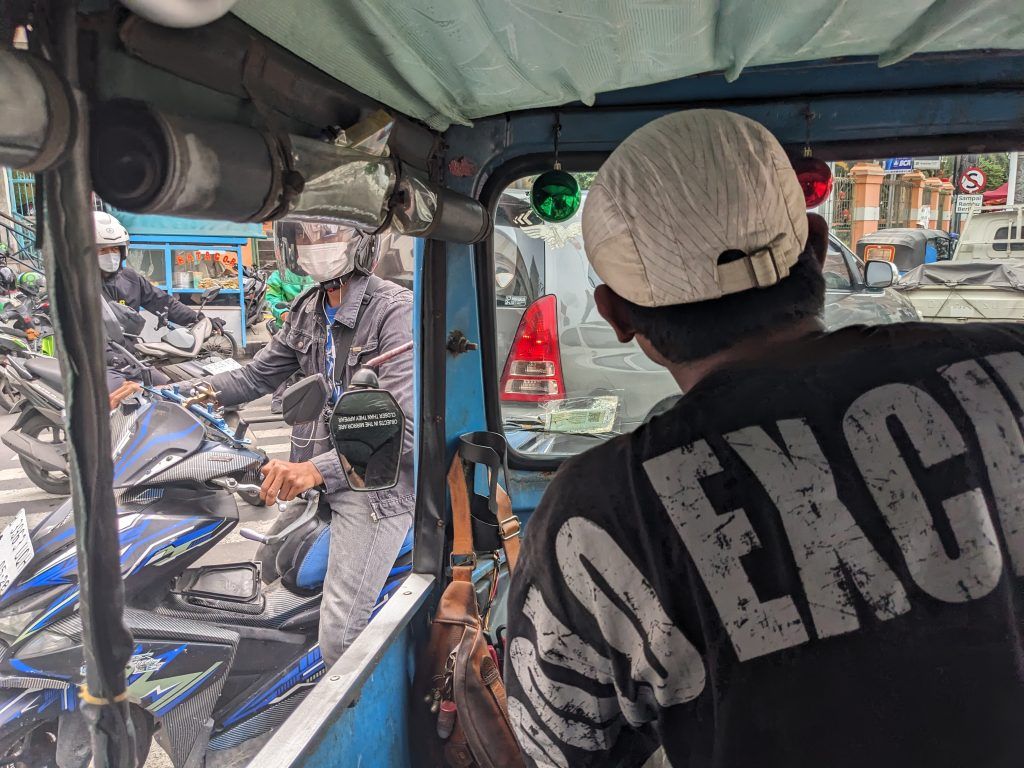
This type of traffic chaos continued when I took a Grab car (SE Asia’s version of Uber) to get back to my apartment.
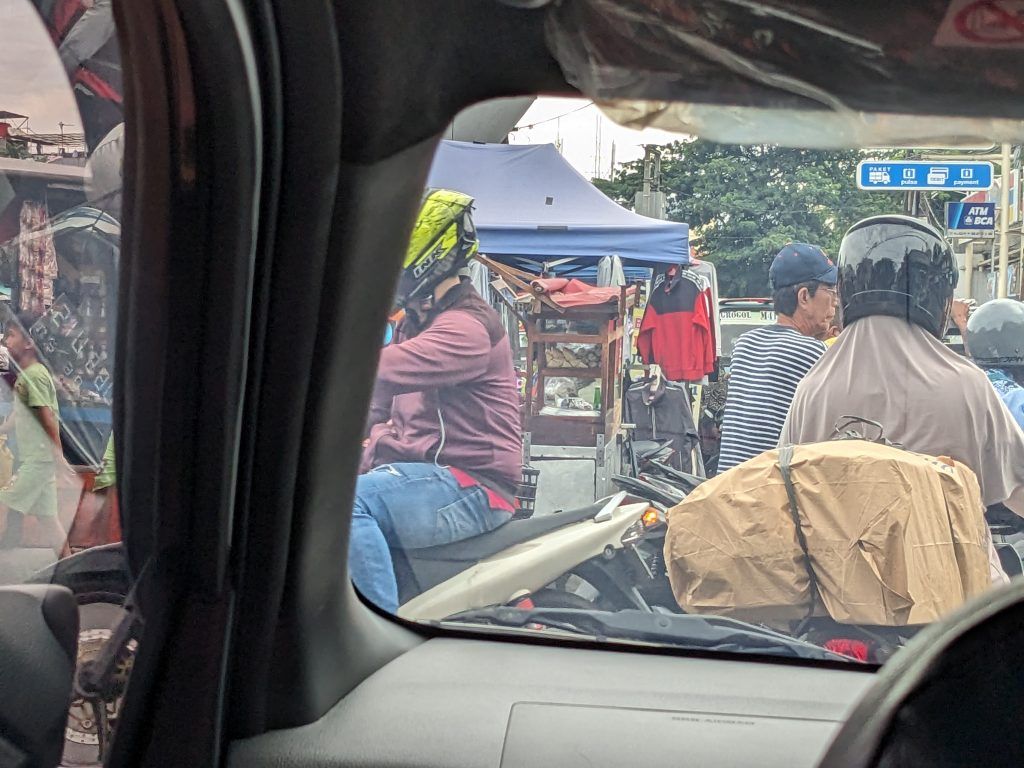
Away from the calm of the city center you can see scores of people trying to eke out a living in the crowded environment.
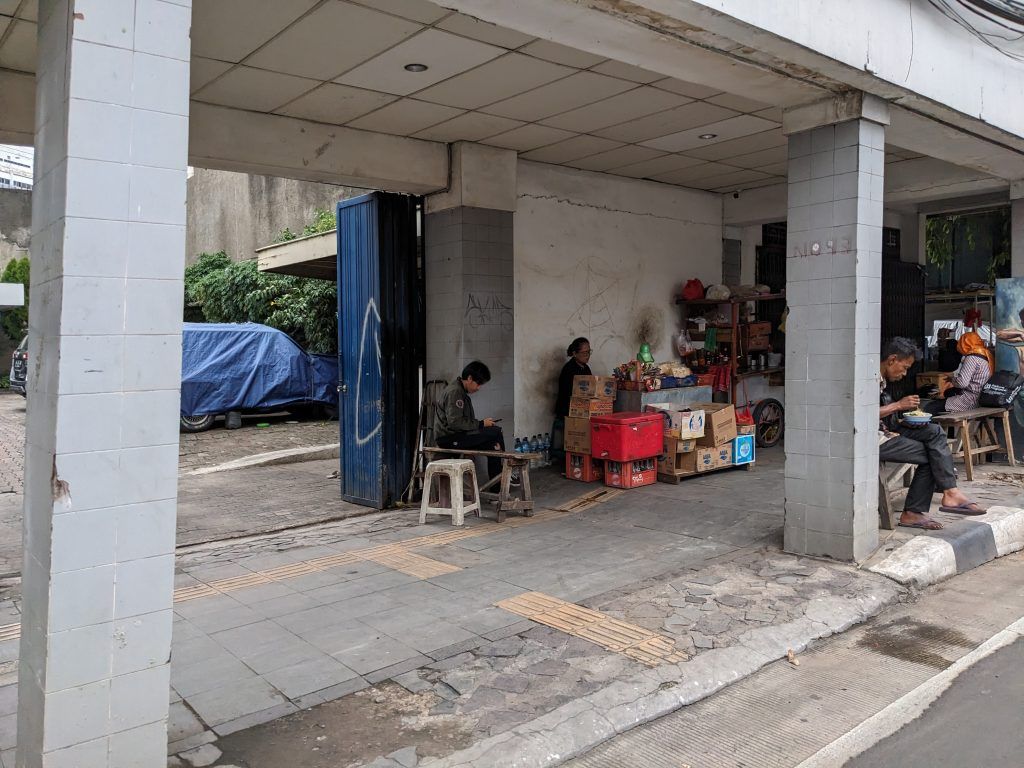
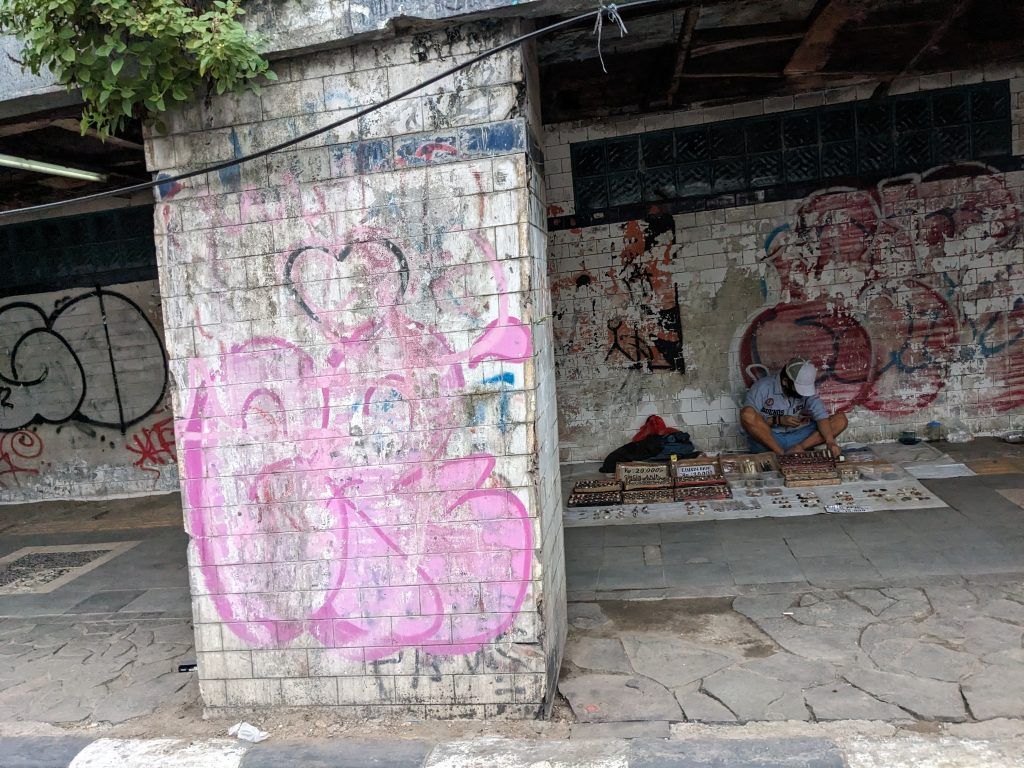
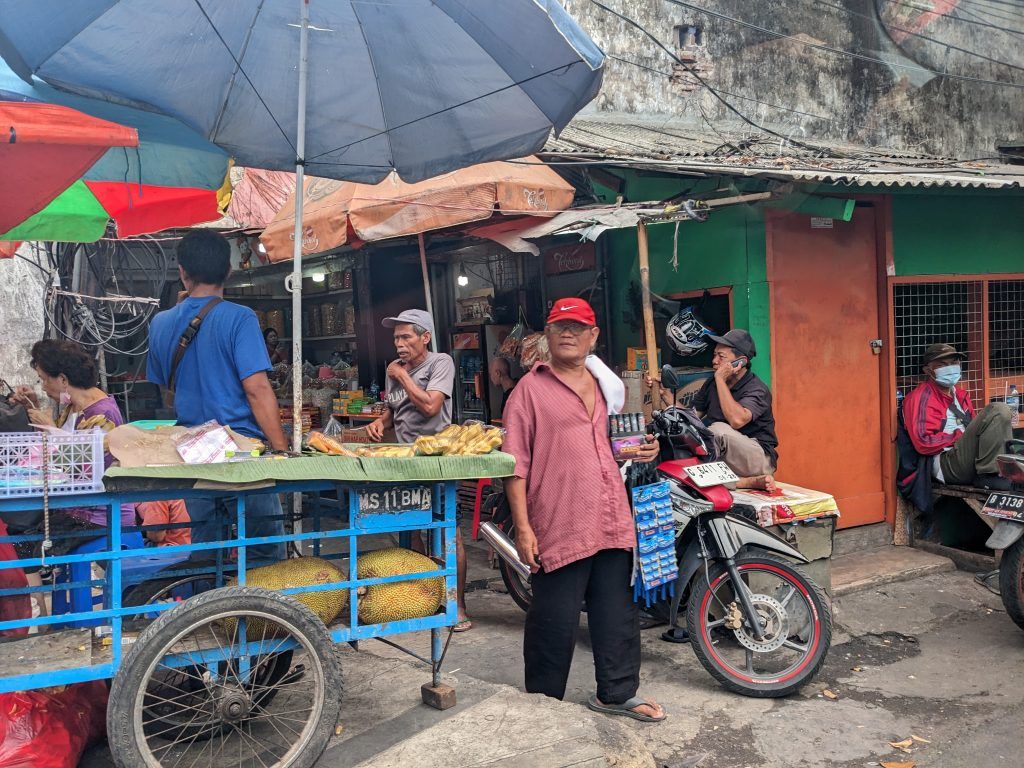
The Dutch built a network of canals to make Batavia (their name for Jakarta) an Asian version of Amsterdam. Now many sections of these canals contain refuse piles with scores of people sorting through the trash to find things they can recycle. I’m assuming anything they don’t take ends up going down the canals into the ocean.
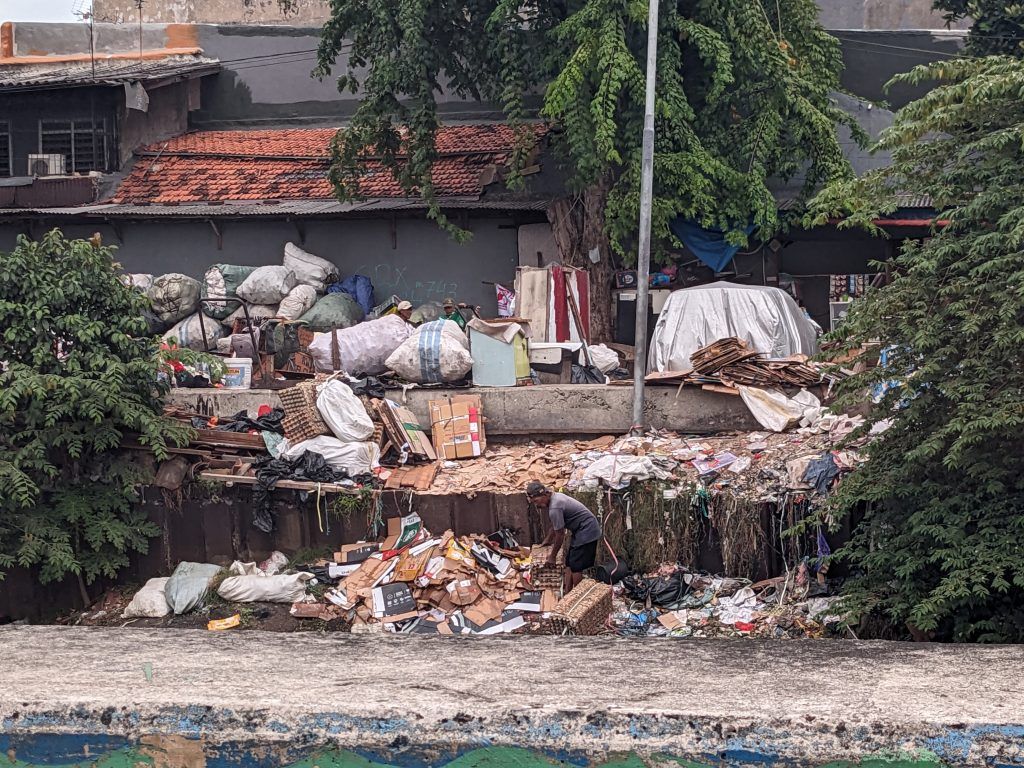
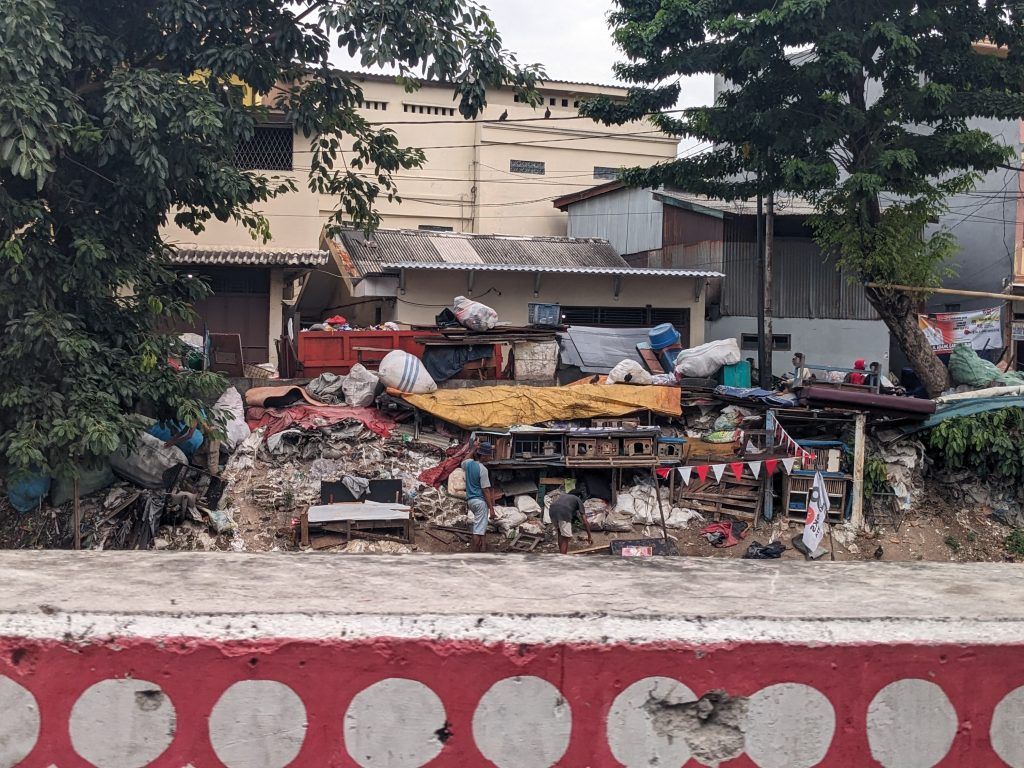
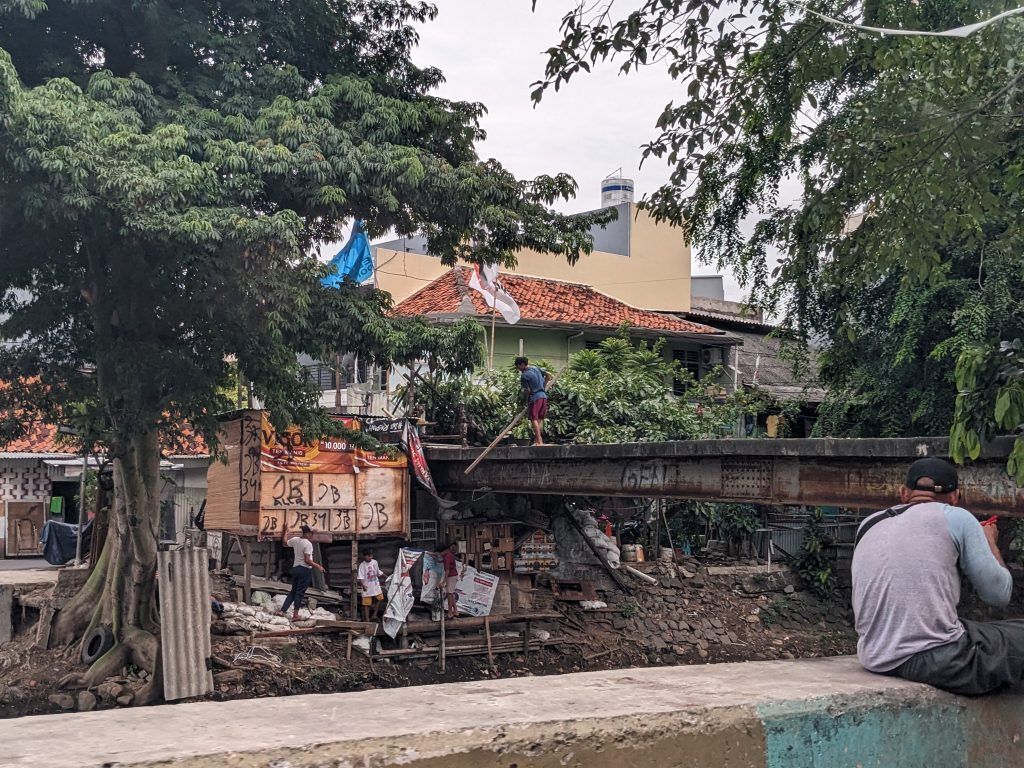
Some of the living conditions I saw on my way back to my apartment.
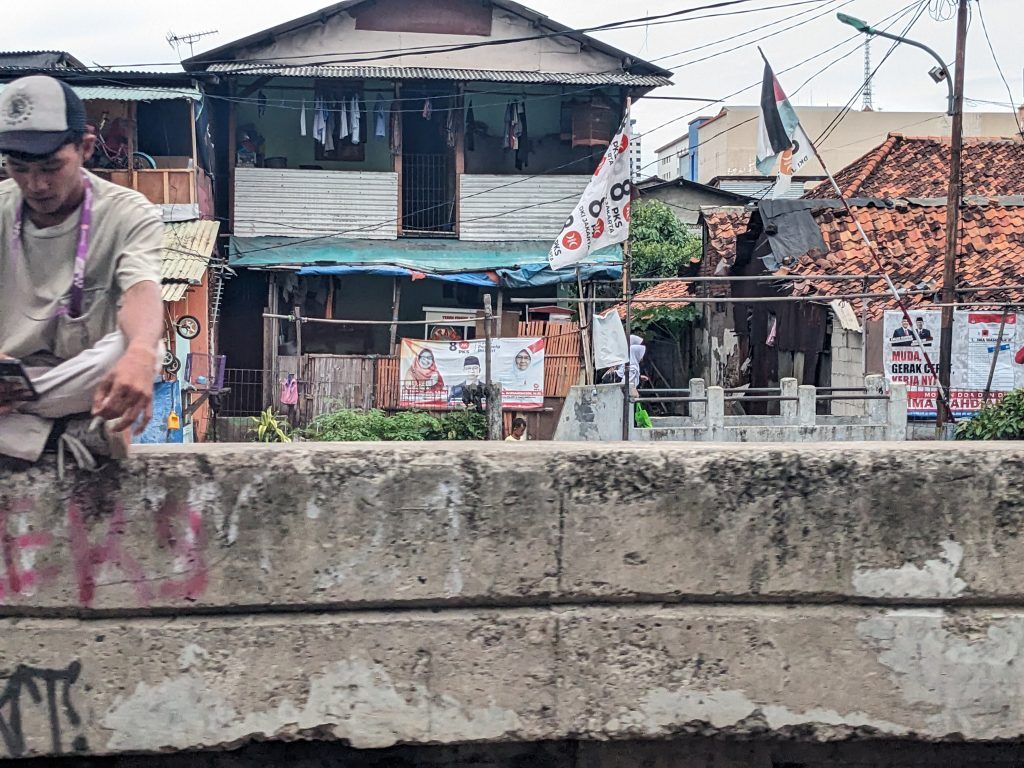
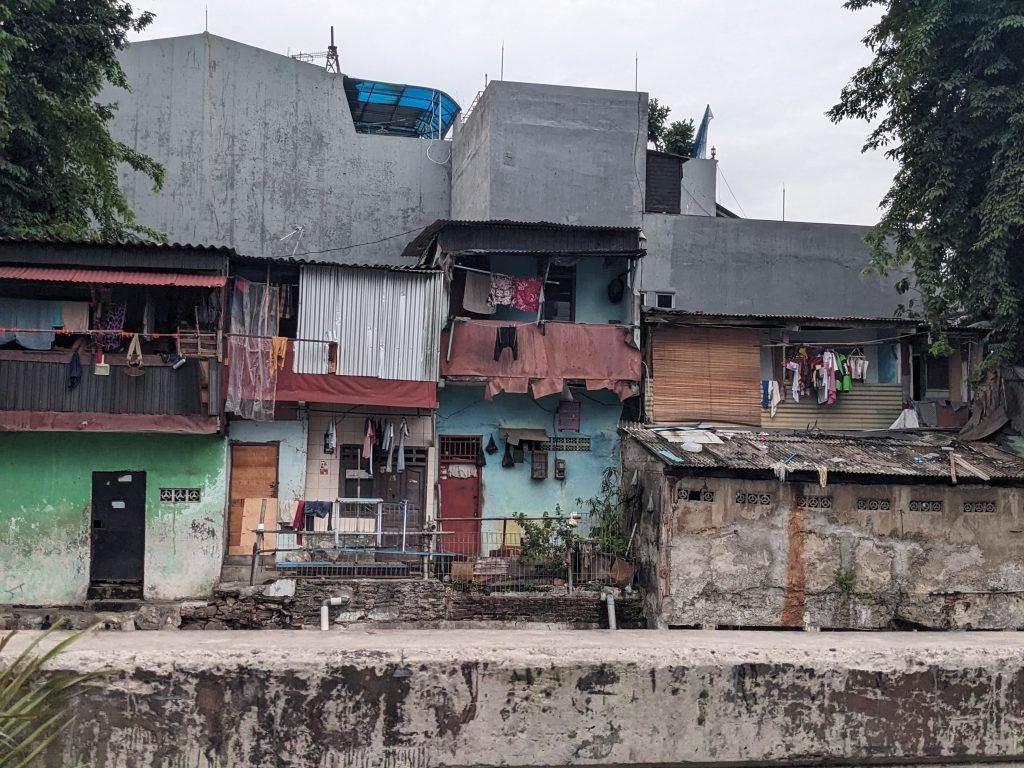
I stayed in a very basic Airbnb apartment in a huge apartment complex.
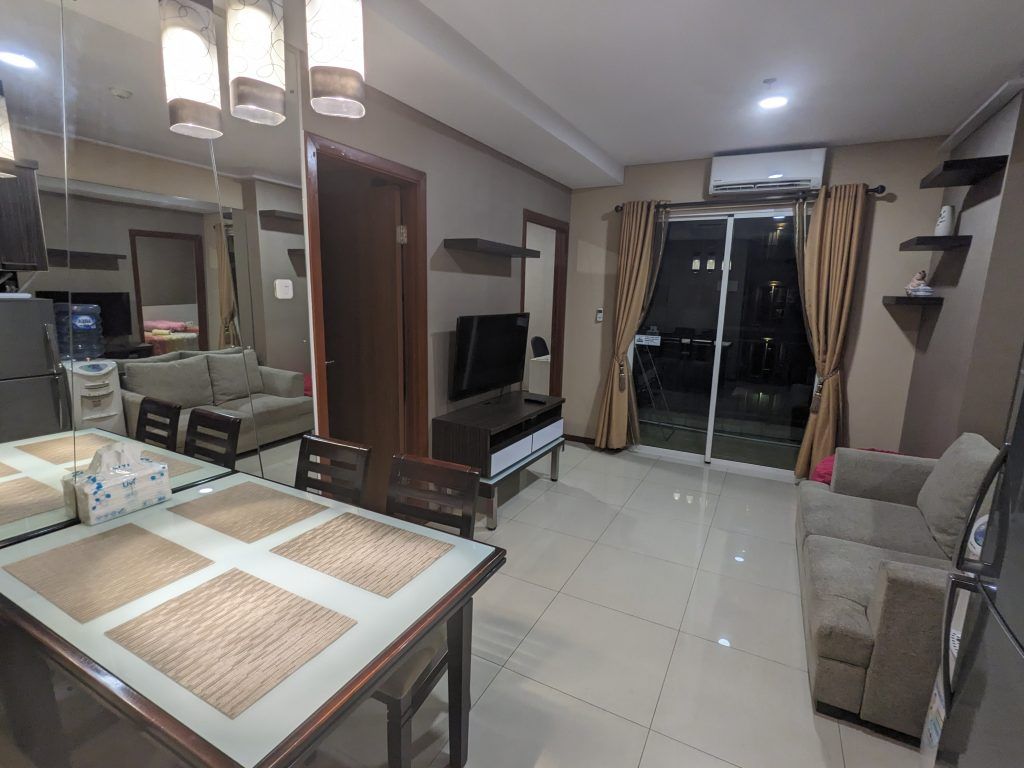
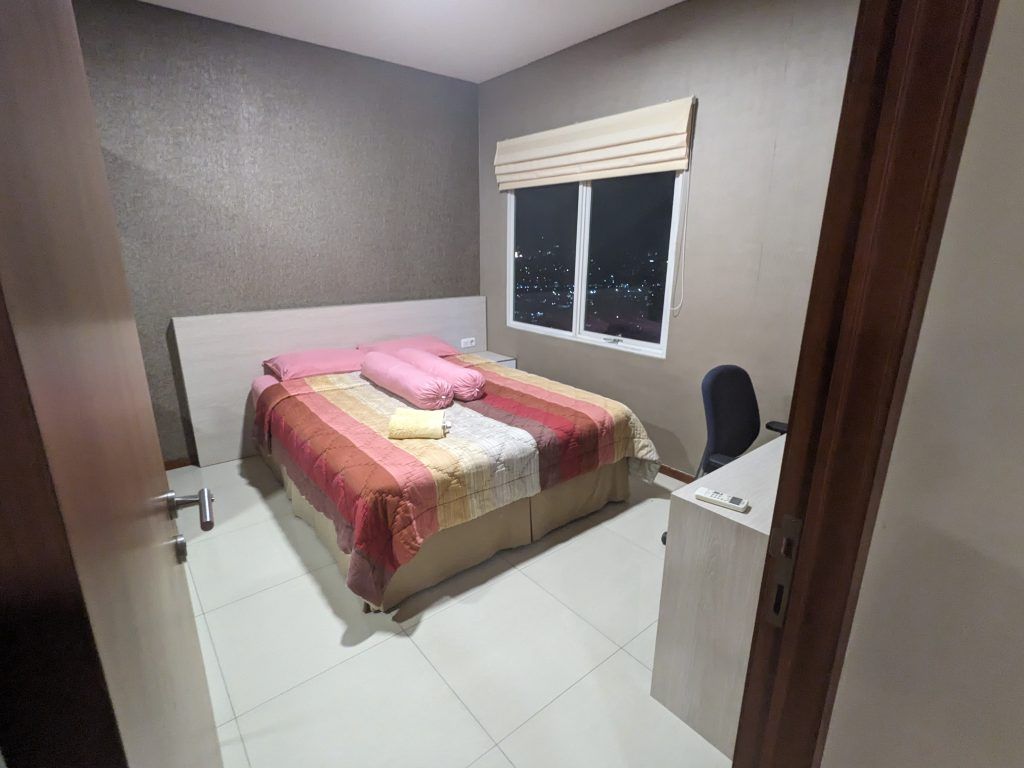
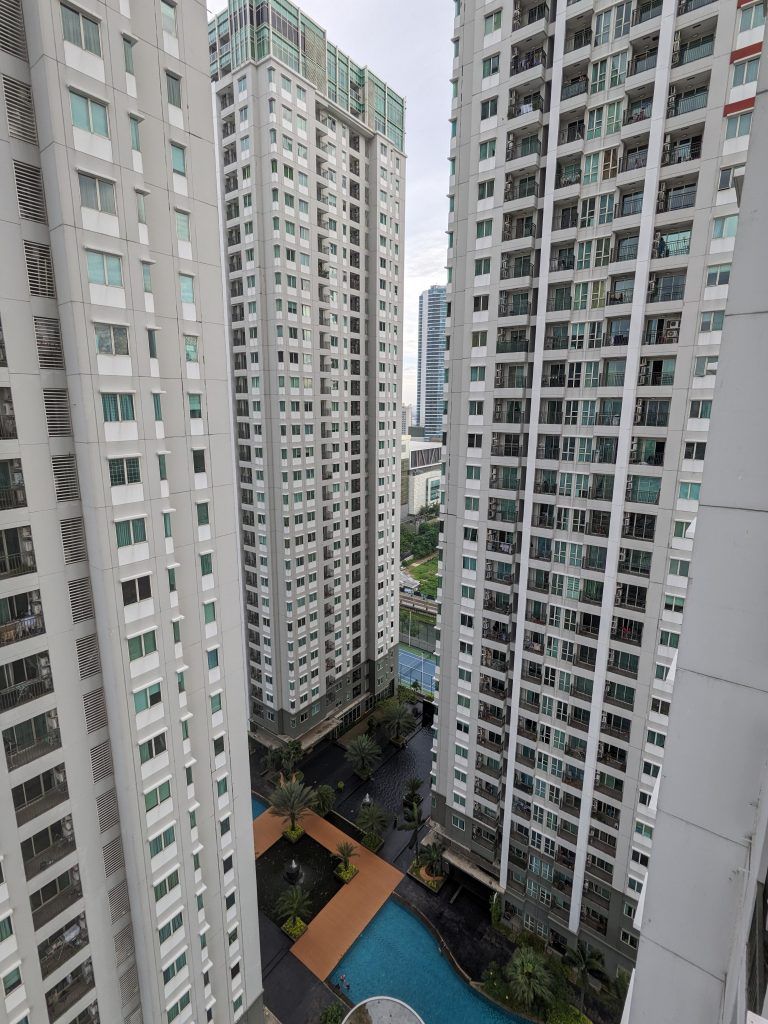
The view from my living room window.
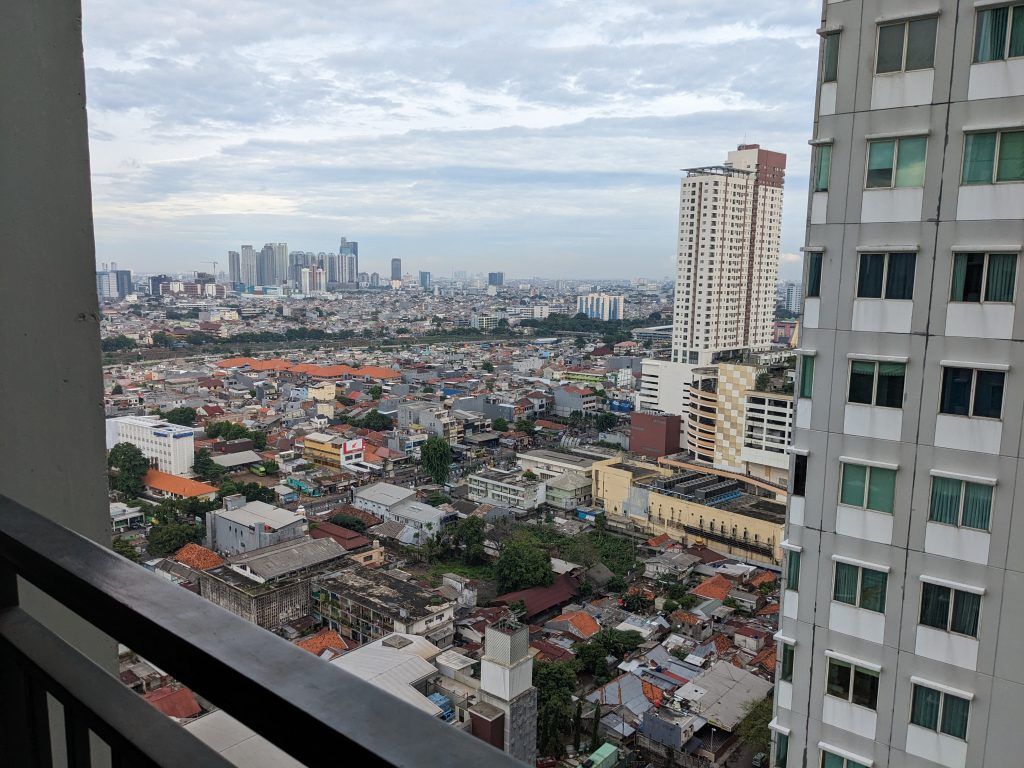
The apartment complex rising up from the grit of the surrounding streets.
